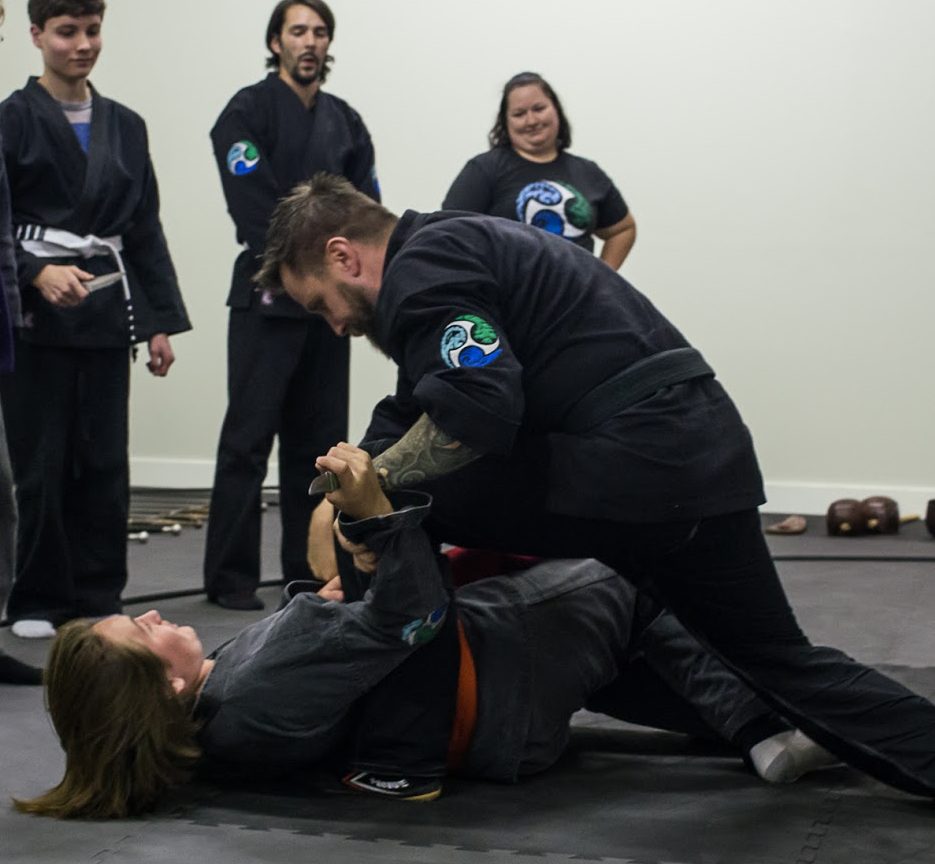Originally Posted on October 22, 2015 by Karri
We’ve all seen the demonstration. An esteemed martial arts master calmly walks out onto the mat, and nods to the group of students waiting nearby, who then enthusiastically proceed to attack only to be effortlessly thwarted by the expert martial artist barely waving a hand in the process. What the layman doesn’t see is the ridiculously exaggerated attacks that come short of hitting the mark, or the acrobatic efforts on the part of the students to make the throws look more impressive. In reality, the wizened master could literally stand stock still and never be in any sort of danger. This is all well and good for a late sixties Honk Kong feature, but this is what passes for teaching in all too many martial arts schools today.
Fighting is ugly, unpredictable and wrought with tiny failures that lead to unexpected results, postures and occasionally defeat. However, the current model of teaching martial arts leaves the majority of practitioners completely unprepared for this, and fall in to one of two categories:
First, you have the model where the student rarely or never comes in contact with another human body. It sounds ridiculous, but it is so prevalent to teach striking and forms that involve no interplay between combatants that when you ask the general population what they think martial arts training is all about, they will often talk about solo kata. How, on earth can you reasonably expect to deal with the chaos and confusion of a fight if you’ve never even faced off with another person? It’s preposterous, but there are very, very successful branches of martial arts that do exactly this located in every strip mall across America.
Second, is the more insidious model. Here we have what looks outwardly to be a much more ‘realistic’ training methodology. One in which one partner provides a scripted attack, and the other practices a scripted answer. Referred in Japanese as the Uke Nage model. It at least provides the practitioner with human contact. However, in the vast majority of these arts is is considered to be extremely rude to offer any kind of resistance to the technique, much less actually strike your partner. This is where we see a limp-wristed and completely unemotional attack responded to with an artful display of Bolshoi-esque grace, or even worse a huge, telegraphed movement that stops stock-still so that an enthusiastic practitioner can create the illusion of mastery over time and space. This model gives the practitioner the false feeling that they can handle any attacker, in any number and is in my mind reprehensible and unforgivable on the part of the instructor. This co-ego stroking is at the heart of dojo-itis. It’s fostering the delusion that you are actually learning to fight, when all you are doing is learning to choreograph.
In my opinion, a practiced martial artist should be able to respond to resistance with skill. So, feeling resistance and experiencing failure should be a part of daily practice. In real life, you will fail at techniques, regardless of your skill level. Look at professional sports martial artists, or ask military and law enforcement professionals. Failure is a reality, and forces you to adapt and overcome. Failure in the dojo fosters deeper understanding and a realistic expectation of how a real altercation will unfold. It will also encourage you to really understand the techniques you are trying to learn. At the same time, there are no guarantees that even with greater experience or size you will always win. I routinely get caught in mistakes by my more athletic or experienced students, especially when fatigued. So, I get to practice thinking on my feet, or I get a lesson in humility. Either way, it’s a win-win.
If your martial arts school does not offer you an opportunity to work on a level where both parties are trying their best to succeed (obviously under supervised and safe conditions) then find another one. You are wasting your time and money, and if you are lucky that will be the worst of it. If you are unlucky, your false confidence could mean that your time being lied to by your instructors and training partners has cost you your life.

